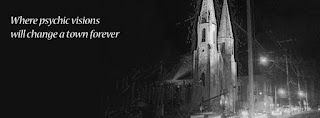What's
over here and a couple of streets over there? Wherever you are in Barcelona,
there's always something to see nearby around the neighborhood or district:
jewels of home-grown Catalan architecture, modernism, and contemporary
architecture, markets that are a treat for the senses, treasures of the ancient
Roman and medieval city, parks where you can unwind … And the best thing of all
is, you don't have to be a great explorer to find and discover all of
Barcelona’s neighborhoods.
Ciutat
Vella, the old town, is the historic nucleus of Barcelona and covers a small
area of some 500 hectares. When you discover Ciutat Vella, you'll discover the
origins of Barcelona. Until the mid-19th century, the city was hemmed in by its
medieval walls which roughly followed the Avinguda Paral·lel, Ronda de Sant
Pau, Ronda de Sant Antoni, Carrer de Pelai, Passeig de Lluís Companys and Parc
de la Ciutadella.
 |
| Eixample |
Modern
Barcelona was born with the Eixample, a district stretching from the Plaça
d'Espanya almost as far as the river Besòs. Its continuous grid layout
connected the old town (the present-day district of Ciutat Vella) with the
other towns and villages on the Barcelona plain (Gràcia, Sants, Sant Martí de
Provençals, Sant Andreu, Sarrià, etc.), which later became Barcelona neighborhoods.
The Eixample is the result of one of the most splendid periods in the city's
history: a time when it was establishing its position as the economic
powerhouse of Catalonia and Spain in the mid-19th century. This economic growth
was reflected in the expansion of the city when the Madrid government lifted
the ban it had imposed since 1714 on building outside the city walls, following
the victory of the Bourbon dynasty in the War of the Spanish Succession
(Barcelona had supported the House of Hapsburg).
 |
| Gracia |
Formerly
a separate village, Gràcia has now been absorbed within Barcelona's urban boundaries.
It still retains its own unique personality and aged customs among its network
of small, narrow bustling streets and numerous squares where locals meet.
Despite its humble origins, Gràcia's population has always been enlightened; it
still has an active political and social life and an extensive network of
deeply rooted civic, cultural, sporting and artistic institutions. In the early
19th century, Gràcia was a village that spread northwards from just outside the
old walled city of Barcelona towards the Collserola Massif. Its origins date
back to centuries earlier, when settlements were established around a
Franciscan convent (the convent of Jesus) and housing a community of Barefoot
Carmelites (Our Lady of Grace). In 1897, Barcelona, which was in the throes of
large-scale expansion with the construction of its Eixample district, absorbed
Gràcia and other surrounding villages becoming one of the city's new
neighborhoods.
 |
| Horta-Guinardo |
Horta-Guinardó
is Barcelona's third largest district located in the north-east of the city,
between the districts of Gràcia and Nou Barris. Uneven landform consisting of
mountains, hills and valleys features the area’s best essence. Its profusion of
green spaces makes it one of the most attractive places for those in search of
peace, dreams, and stillness in the open air. The history of Horta-Guinardó can
be traced back to 965 AD, and the old valley of Horta, which is now known as
the Vall d'Hebrón. This is where the village of the same name was founded. Like
Gràcia, Sants, Sant Martí, and other villages around the city, Horta was
annexed to Barcelona, but somewhat later, in 1904. It was a mainly rural area
and wasn't developed until the 1950s when people from Catalonia and the rest of
Spain came to the city in search of work and definitive settlement.
 |
| Les Corts |
The
district of Les Corts spans the western half of the Avinguda Diagonal, the part
furthest away from the sea. It was formerly a village of the same name, which,
like Gràcia, Sants and Sant Martí, was annexed by Barcelona during the late
19th century. Streams that flowed down from Collserola irrigated the entire
area. It was an agricultural settlement and has now become a residential area
with some of the city's most important shopping centers and major sporting
venues and cultural attractions. However, it still has a great amount of still
green areas, including parks and the nearby Collserola Massif.
 |
| A Monastery in Pedralbes |
The
iconic FC Barcelona Stadium, Camp Nou, has stood proudly since 1957 on the
southern side of the Diagonal. The stadium tour includes a visit to one of the
most popular museums among tourists and locals: the FC Barcelona Museum, which
opened in 1984 and was completely refurbished in 2011. Formerly the residence
of the king and queen of Spain when they visited Barcelona, the Palau Reial de
Pedralbes stands on the north side of the Diagonal, in the Pedralbes neighborhood.
The gatehouses of the Güell Estate are located at the north end of the palace
grounds by the Avinguda de Pedralbes. This extraordinary work by Antoni Gaudí
is renowned for its gate in the shape of a dragon. And at the far end of the neighborhood,
almost in the foothills of the massif, you'll find the majestic Pedralbes
Monastery, which was founded in the 14th century. As a fine example of pure
Gothic architecture, it has the largest cloisters in Europe of this style.























